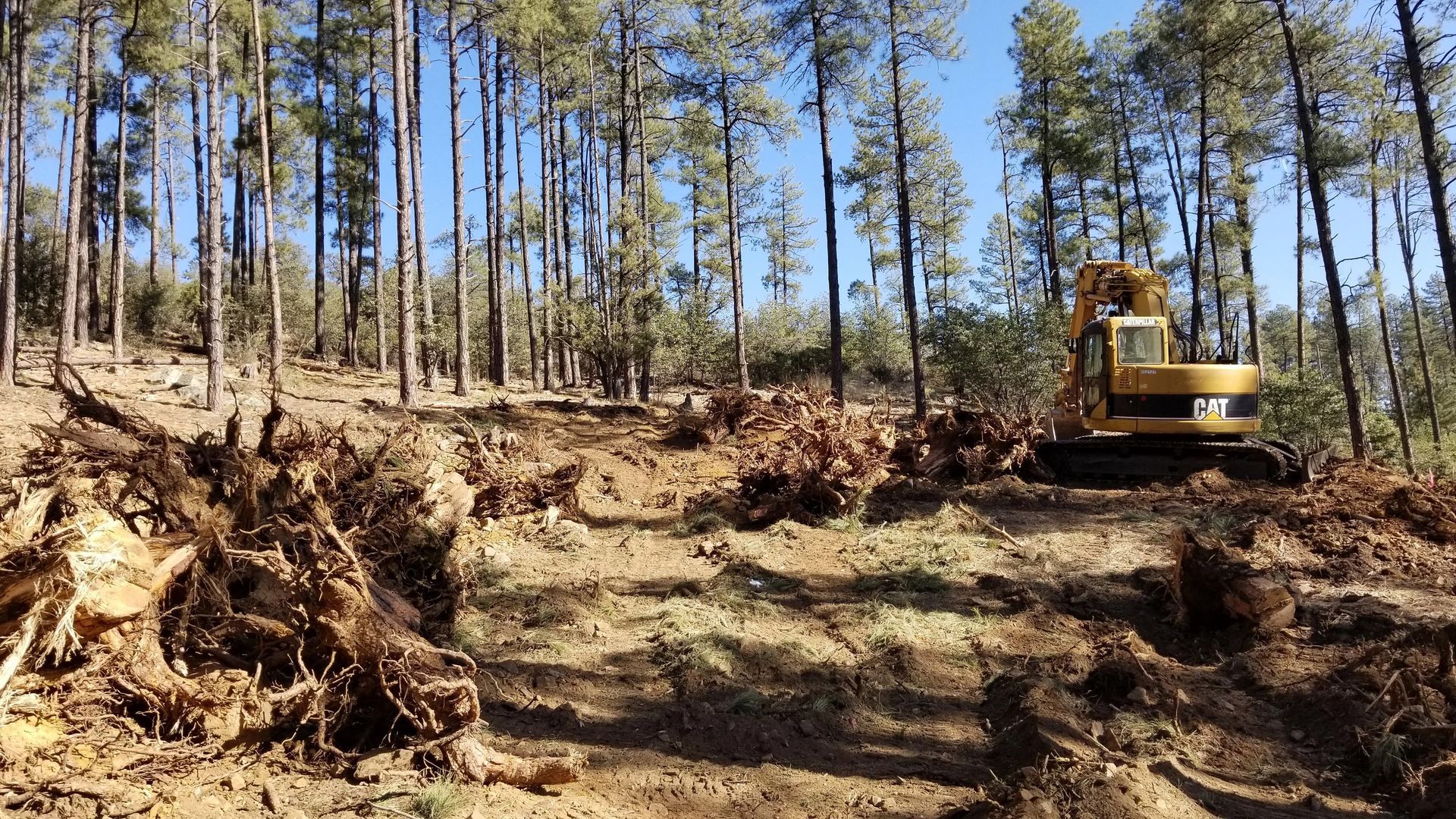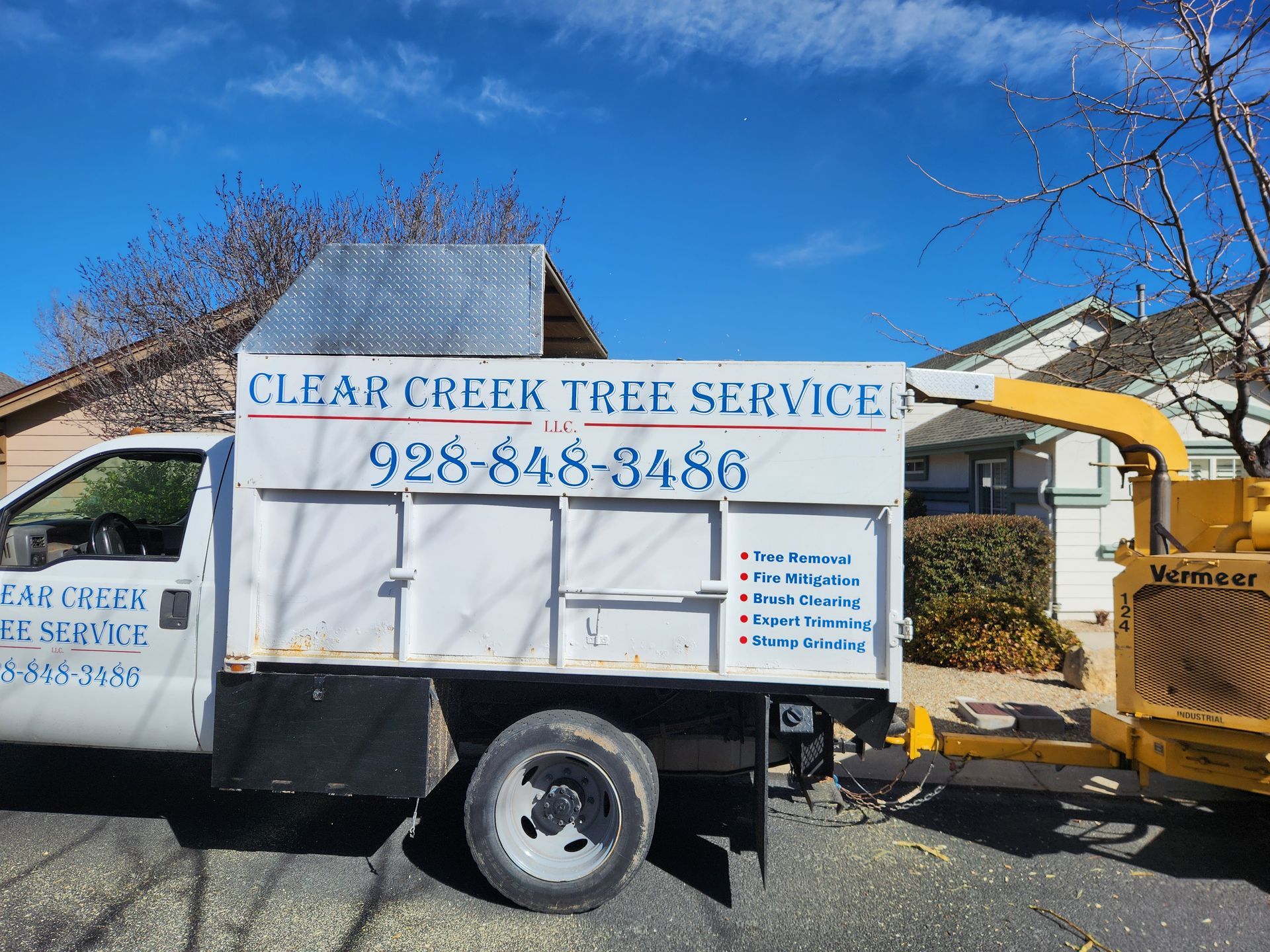How Monsoon Season Affects Trees in Prescott, AZ (And What Homeowners Should Do)
Prescott’s monsoon season typically spans from June through September, bringing with it dramatic shifts in weather conditions—including high winds, heavy rain, lightning, and flash floods. These intense, fast-moving storms place significant stress on trees throughout the region.
Without proper care, monsoons can lead to uprooted trees, broken limbs, and long-term damage to tree health and property. In this post, we’ll explore how monsoons impact trees in Prescott and what homeowners can do to reduce the risk of storm-related tree hazards.

High Winds and Tree Uprooting
Monsoon storms in Prescott often combine saturated soil with strong gusty winds, creating the perfect conditions for trees to lean, break, or completely uproot. When the soil becomes waterlogged, it loses the firmness needed to support root systems—especially in shallow-rooted species like cottonwoods or Siberian elms.
Even healthy trees can fall if wind pressure overwhelms their compromised footing. Signs of instability after a storm include:
- Sudden leaning
- Soil heaving around the base
- Cracks in the trunk or major limbs
Broken Limbs and Fallen Branches
High winds are a hallmark of Arizona’s monsoon season. Trees with poor structure, deadwood, or overextended limbs are especially vulnerable. Strong gusts can cause significant limb breakage—posing a risk to homes, vehicles, fences, and power lines.
Why Pre-Storm Pruning Matters:
- Removes weak or dead branches before storms hit
- Reduces wind resistance by thinning dense canopies
- Keeps limbs away from structures and utility lines
- Enhances tree health and resilience over time
Proper pruning performed by a certified arborist can dramatically reduce the risk of storm damage and improve the longevity of your trees.
Soil Erosion and Root Exposure
Monsoon rains are intense and fast, often leading to soil erosion—especially on sloped or poorly drained landscapes. When topsoil washes away, it can expose tree roots, which:
- Decreases water and nutrient absorption
- Increases vulnerability to disease and pest infestation
- Reduces overall tree stability
Prevent erosion by:
- Installing proper drainage or grading
- Applying mulch around tree bases (not against the trunk)
- Planting ground cover to hold soil in place
Addressing erosion early helps trees stay anchored and healthy during storm season.
Increased Risk of Tree Disease
Warm, wet, and humid monsoon conditions are ideal for the spread of
fungal and bacterial tree diseases such as:
- Anthracnose (common in oaks)
- Black leaf spot
- Root rot
- Seridium Canker (affecting cypress and juniper trees)
Storm-stressed trees are also more vulnerable to
bark beetle infestations, which thrive in weakened hosts.
Warning signs to watch for:
- Yellowing or dropping leaves
- Wilting or leaf scorch
- Dark or spotted leaves
- Branch dieback or cankers
- Visible insect damage or sawdust at the base
Early detection and treatment can prevent minor issues from becoming major health threats.
Power Outages and Property Damage
One of the most serious consequences of monsoon storms is trees interfering with power lines, which can cause:
- Widespread outages
- Fire hazards
- Property damage from falling branches or trees
Routine tree inspections can identify these risks before storms strike. A licensed arborist can assess whether limbs need to be cleared, trees need bracing, or overgrown branches are too close to structures and wires.
What Homeowners Can Do to Prepare
Being proactive before the peak of monsoon season is the best way to protect your trees—and your property.
Tree Care Checklist:
- Schedule a pre-monsoon tree inspection
- Remove dead, diseased, or unstable trees and branches
- Prune to improve airflow and structure
- Reinforce young or newly planted trees with staking
- Watch for erosion near roots after heavy rainfall
Conclusion
Monsoon season in Prescott brings beauty, but also potential hazards. With the right care and preparation, homeowners can minimize tree-related damage and keep their landscape safe and healthy.
Whether you’re concerned about a leaning tree, overgrown limbs near your roof, or erosion near the base of your trees—Clear Creek Tree Services is here to help. Our team of licensed arborists understands the unique environmental risks of Northern Arizona and offers safe, sustainable solutions that protect your home and our ecosystem.
Need help prepping your yard for monsoon season?
Contact Clear Creek Tree Services today for a professional tree inspection and storm-readiness assessment.
Contact Us
We will get back to you as soon as possible.
Please try again later.
More Posts Like This:
Looking for Trusted Tree Removal Experts in Prescott, AZ?
At Clear Creek Tree Service, we’re committed to helping you maintain a safe, attractive, and hazard-free property. Whether you’re dealing with a dangerous tree, need stump grinding, or require professional land clearing, our experienced crew is here to assist.
Don’t let a risky tree lead to expensive damage. Reach out today for a free consultation and estimate on tree removal services in Prescott, AZ.









